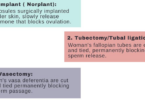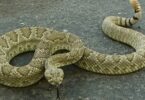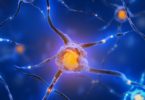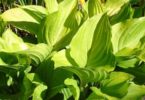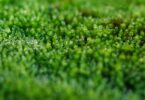Cyanobacteria are
(a) Mosses which attack bacteria
(b) Bacteria which attack cyanophyceae
(c) Autotrophic organism with phycocyanin
Which may live as a space parasite in Anthoceros?
(a) Ulothrix
(b) Spirogyra
(c) Nostoc
Cynobacteria is a
(a) Virus which affect bacteria
(b) Bacteria which used cyanide as nutrition
(c) Algae which has blue-green pigment
(d) Colorful fungi
Pigment phycocyanin and phycoerythrin are found in:
(a) Bacillariophyceae
(b) Archaebacteria
(c) Eubacteria
(d) Cynobacteria
(e) Chlorophyceae
Related: Yeast Multiple Choice Questions
According to Bradley and Carr, the nitrogen fixation takes place in
(a) Akinetes
(b) Vegetative cells
(c) Heterocysts
Nitrogen fixation by Nostoc takes place in
(a) Heterocysts
(b) Vegetative cells
(c) Akinetes
(d) Hormogonia
The existence of process of transformation in cyanobacteria has been experimentally established by
(a) Kumar
(b) Ueda
(c) Doolittle
(d) Rippka
What is the photosynthetic product in blue-green algae?
(a) Normal starch
(b) Glycogen
(c) Cyanophycean starch resembling glycogen
Related: Friction related Questions
Nostoc is known to perform
(a) Only photosynthesis
(b) Photosynthesis and nitrogen fixation simultaneously
(c) Only nitrogen fixation
(d) Either photosynthesis or nitrogen fixation at a time
Auxospores and hormocysts are formed respectively, by
(a) Some diatoms and several cyanobacteria
(b) Some cyanobacteria and many diatoms
(c) Several cyanobacteria and several diatoms
(d) Several diatoms and a few cyanobacteria
Incipient nucleus is present in
(a) Chlorophyceae
(b) Rhodophyceae
(c) Myxophyceae
(d) Phaeophyceae
Which of the following is a Prokaryote?
(a) Chlorella
(b) Chlamydomonas
(c) Protomyces
(d) Oscillatoria
Related: Electromagnetic Waves Questions and Answers
Hormogonia of cyanobacteria are
(a) Spore producing organs
(b) Products of syngamy
(c) Fragmented trichomes
(d) Cells adjacent to heterocyst
Which of the following is coloured portion in the cell of Nostoc?
(a) Chromoplasm
(b) Centroplasm
(c) Central body
(d) Genophore
The blue-green algae are so called as they have in addition to green pigment chlorophyll, a blue pigment known as
(a) Phycocyanin
(b) Chromoplasm
(c) Cyanophycin
(d) Phycoerythrin
Blue-green algae are included in
(a) Eukaryotes
(b) Rhodophyceae
(c) Prokaryotes
(d) Chlorophyceae
Related: Periodic Table Quiz Questions and Answers
Cyanobacteria is a
(a) Category of bacteria
(b) Is the new name of all bacteria
(c) New name of myxophyceae or blue-green algae
Which of the following is not a blue-green algae?
(a) Nostoc
(b) Anabaena
(c) Lichen
(d) Aulosiras
Cyanobacteria of great nutritive value is
(a) Gleocapsa
(b) Scytonema
(c) Stigonema
(d) Spirulina
When green algae are illuminated, motile aerobic bacteria usually accumulate near them. This is because, bacteria
(a) Have attraction for light
(b) Have attraction for green plants
(c) Have attraction for oxygen
(d) Have attraction for CO2
Related: Relative Motion Practice Problems
In prokaryotes, the genetic material is
(a) Linear DNA with histones
(b) Circular DNA with histones
(c) Linear DNA without histones
(d) Circular DNA without histones
The characteristic of blue green algae is
(a) DNA without histone
(b) Nuclear membrane absent
(c) 70 S ribosomes
(d) All of the above
Which of the following granules are present in cyanobacteria?
(a) Polyglucon granules
(b) Carboxysomes
(c) Gas vacuoles
Related: Alkene Reactions Quiz
The fossil record of blue-green algae is in
(a) Palaeozoic
(b) Pre–palaeozoic
(c) Carboniferous
The cells of cyanobacteria and bacteria exhibit similarity in having
(a) Plastids
(b) Nuclei (True)
(c) Centrosome
(d) DNA
Hormogonia are the vegetatively reproducing structures of
(a) Ulothrix
(b) Spirogyra
(c) Oscillatoria
(d) Chlamydomonas
Blue-green algae belong to
(a) Myxomycetes
(b) The eukaryote
(c) The prokaryota
(d) Neither the eukaryota nor the prokaryota
Related: Multiple Choice Questions on Kingdom Protista
Microscopic green algae of the ocean are called
(a) Spirogyra
(b) Volvox
(c) Diatoms
(d) Ulotrima
Atmospheric nitrogen-fixation is carried on by
(a) Funaria
(b) Anabaena
(c) Chlamydomonas
(d) Fern gametophyte
Prokaryotes are characterized by
(a) A true nucleus with double layered nuclear membrane is absent
(b) Well developed nucleus with double layered nuclear membrane present
(c) Presence of cell wall made of chitins, mucopolysaccharides and absence of cell organelles like mitochondria and chloroplasts
(d) Autotrophic in nature and only DNA is present
Which is not true for the heterocyst of Nostoc?
(a) Intercalary position
(b) Site of nitrogen fixation
(c) Presence of polar nodules
(d) CO2 fixation ability
Related: MCQ on Biomass Energy
Which of the following movements may be found in blue-green algae?
(a) Flagellar
(b) Ciliary
(c) Gliding
The following micro-organisms have the property of photosynthesis as well as nitrogen fixation
(a) Azotobacter
(b) Rhizobium
(c) Cyanobacteria
(d) Clostridium
Angiosperm in which Nostoc remains endophyte is
(a) Melia indica
(b) Arachis hypogea
(c) Gunnera manicata
Unicellular cyanobacteria reproduce asexually by
(a) Conjugation
(b) Fragmentation
(c) Binary fission
(d) Hormogones

